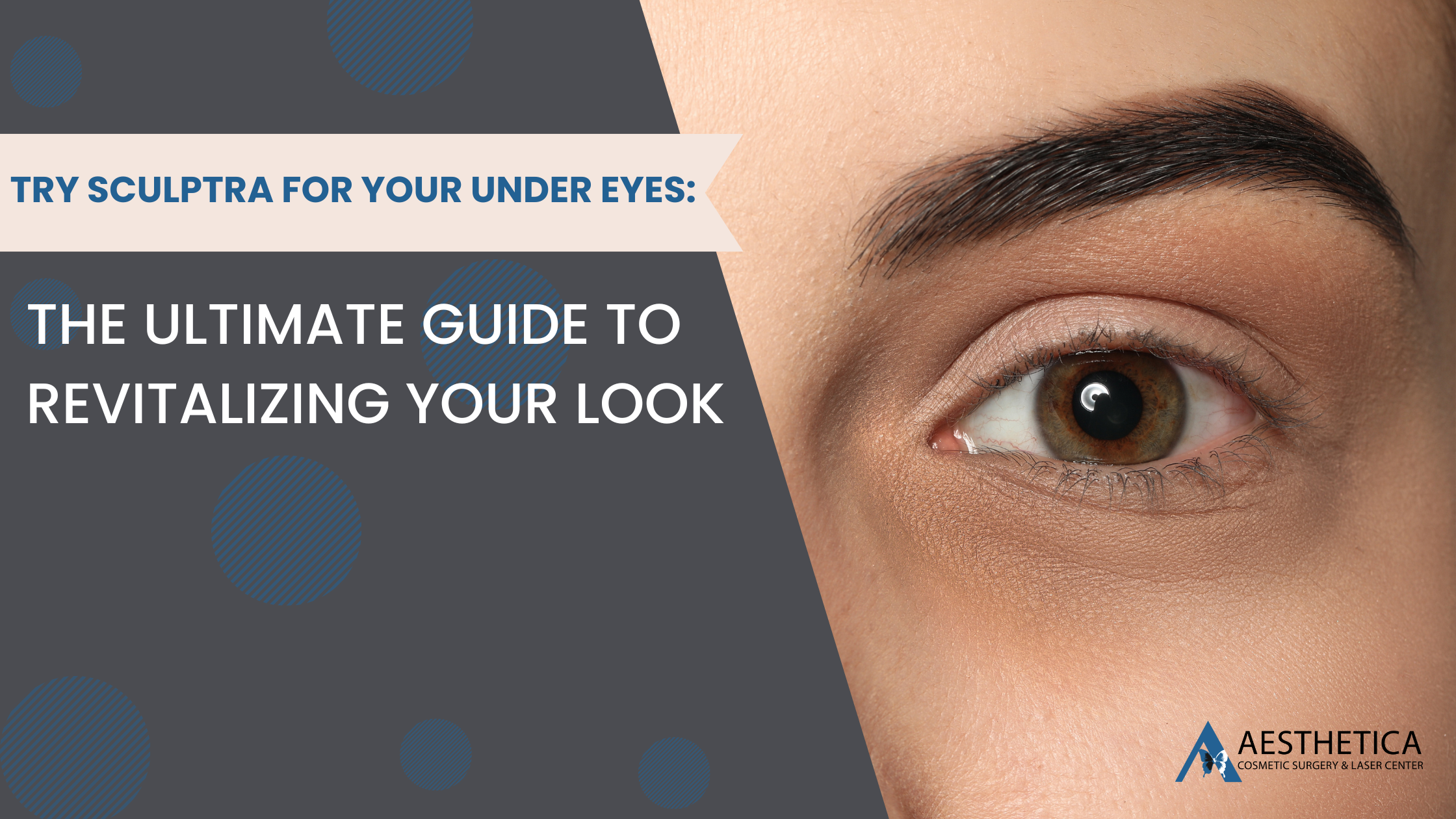
Aesthetica Editorial Team

A frequent topic of discussion among new mothers centers around the noticeable changes to their breasts after giving birth and breastfeeding. The quest to regain the pre-pregnancy silhouette often leads to exploring surgical options, with mastopexy, commonly known as a breast lift, being a popular choice.
Can this procedure turn back the clock and restore your breasts to their former glory? Dive with us into the world of mastopexy as we unpack its potential, limitations, and whether it can be the key to reclaiming your pre-pregnancy bust.
What Happens to Breasts Post-Pregnancy?
Navigating the post-pregnancy period, many women notice that their bodies, especially their breasts, don’t exactly bounce back to their pre-baby state.
During pregnancy, hormonal shifts and the preparation for breastfeeding lead to an increase in breast size. However, even post-pregnancy, particularly after breastfeeding, it’s not uncommon for breasts to undergo size, shape, and volume changes.
Some women may experience sagging, while others could find their breasts appearing smaller or uneven due to stretched skin, tissue shifts, and milk production changes. While it’s a natural evolution, understanding these transformations will help women set realistic expectations and make informed decisions about their post-pregnancy bodies.
Post-pregnancy, breasts undergo changes due to hormones and breastfeeding. Initially, they enlarge from milk production. Over time, as the milk supply adjusts or ceases, breast tissue can reduce, sometimes leading to a softer or sagging appearance. Skin elasticity, genetics, and weight changes also affect post-baby breast transformations. It’s nature’s way, but every journey is unique!
Can Breast Lift Surgery Restore Your Pre-Pregnancy Breasts?
For many women post-pregnancy, the mirror reflects a different breast contour than the one they remember. Enter mastopexy (breast lift), a surgical procedure our patients turn to with hopes of reclaiming that pre-baby silhouette.
During the breast lift procedure, a surgeon makes incisions on the breasts, typically around the areola, down the front, and sometimes beneath the breast, depending on the degree of lift required. Excess skin is then removed, and the remaining skin is tightened to provide a lifted appearance. The nipples and areolas are repositioned for a more natural look. Once the desired shape is achieved, the incisions are sutured. Recovery is as simple as wearing a support bra and following post-op care instructions.
Individual results vary based on factors like skin elasticity and age. While a breast lift adds the “oomph” factor to your décolletage, expecting a complete rewind might set the bar a tad high.
How Many Cup Sizes Do You Lose With a Breast Lift?
A breast lift primarily focuses on raising and reshaping sagging breasts rather than significantly altering their size. The procedure removes excess skin and tightens the surrounding tissue, giving breasts a firmer, perkier appearance. While breast size reduction isn’t the main objective of a breast lift, some women might notice a slight decrease in their cup size after the surgery — typically not more than one cup.
However, it’s important to remember that the change largely depends on the amount of excess skin removed. It’s also worth noting that a breast lift can be combined with augmentation or reduction surgeries for those seeking a more considerable size change. If size is a concern, discussing the desired outcome with your plastic surgeon is best.

How Painful is a Breast Lift?
A breast lift is a surgical procedure, and, like most surgeries, discomfort is expected. Patients are typically under general anesthesia during the procedure, so they don’t feel pain. Post-operatively, many describe the pain as moderate, similar to the sensation after an intense workout. However, everyone’s pain threshold is different. While some may find the recovery relatively manageable with prescribed or over-the-counter painkillers, others might experience more discomfort.
It’s common to feel tightness, soreness, or swelling in the initial days following the procedure. Thankfully, these sensations generally subside as the healing process progresses. Following post-op care guidelines and maintaining open communication with your surgeon is crucial to ensure the smoothest possible recovery.
Do You Get Scars From a Breast Lift?
Mastopexies result in scars since incisions are made during the procedure. However, the extent and location of these scars largely depend on the technique used. Common approaches include a circular scar around the areola, a lollipop-shaped scar extending from the areola to the breast crease, or an anchor-shaped scar that runs along the breast crease.
Over time, with proper care, these scars typically fade, though they won’t disappear completely. A skilled surgeon aims to place incisions in discrete locations and provide guidance on scar care to minimize their appearance. Discussing scarring with your surgeon can clarify expectations and outcomes if scarring is a concern.
How Do You Sleep After a Breast Lift?
After a breast lift, sleep positioning is essential for optimal healing and comfort. It’s generally recommended that you avoid sleeping on your stomach or side for several weeks to prevent putting pressure on the breasts and potentially disrupting the healing process. Instead, the best position is to sleep on your back, slightly elevated. Using pillows or a wedge pillow to prop yourself up can help reduce swelling and discomfort.
While this adjustment might be tricky for natural side or stomach sleepers, it’s a temporary change that aids a smoother recovery. Additionally, wearing the supportive bra provided by your surgeon, even during sleep, helps maintain the shape and offers added comfort during the initial healing phase.
How to Maintain the Results of a Mastopexy
So you’ve taken the plunge with a mastopexy, and now you’re wondering how to make those rejuvenated curves last? Kudos on your new look!
First, invest in well-fitting bras. They’re not just for immediate post-op. A good bra can help combat gravity’s persistent pull.
Next, aim to maintain a stable weight. Drastic weight fluctuations can alter breast shape, and maintaining a stable weight can help your results endure.
Next is sun protection. Sun exposure decreases skin elasticity, so use sunscreen and protective clothing to guard your chest area.
Finally, embrace a healthy lifestyle. A balanced diet and regular exercise contribute to overall skin health.
Remember, while a mastopexy offers a lovely refresh, continuous care can make that renewed confidence shine for years to come.
What Happens if You Undergo a Breast Lift and Then Get Pregnant Again?
If you undergo a breast lift and later become pregnant, the changes your breasts experience during pregnancy and breastfeeding can impact lift results. Pregnancy often causes breast enlargement due to hormonal changes and milk production, which can lead to stretching of the skin. After childbirth and breastfeeding, the breasts may lose volume and potentially sag again.
While the previous mastopexy won’t complicate future pregnancies or breastfeeding, some of the initial benefits of the lift might be diminished. For this reason, some women opt to wait until they’re done having children before getting a breast lift. However, individual choices vary based on personal preferences and circumstances, and this is another great question to discuss with your plastic surgeon.
When Can I Go Braless After a Breast Lift?
Wearing a supportive bra is crucial for the early healing process after a breast lift procedure. Typically, your surgeon will provide or recommend a special post-operative bra that you should wear nearly continuously for several weeks. Going braless too soon can strain healing incisions and may impact the long-term results of your lift. Generally, most surgeons suggest waiting at least 4 to 6 weeks post-surgery before occasionally going without a bra.
However, this timeline can vary based on the individual healing progress and the surgeon’s guidance. Following your surgeon’s post-operative advice and attending all follow-up appointments is essential to ensure the best results and avoid potential complications.
Can You Breastfeed With a Breast Lift?
Yes! Many women can still breastfeed after having a breast lift. However, it’s essential to understand that the ability to breastfeed post-surgery depends on the specific technique used during the procedure. Some methods involve repositioning the nipple and areola without detaching them from the underlying breast tissue, which preserves the milk ducts. Other techniques might impact the milk ducts, potentially affecting breastfeeding capability.
If breastfeeding in the future is a concern, it’s crucial to discuss this with your surgeon beforehand so that they can select the most suitable technique. While a breast lift doesn’t necessarily rule out breastfeeding, being informed and making decisions with your priorities in mind ensures the best outcome for your needs.

Start Your Breast Lift Journey With Dr. Chang!
Meet us at 19500 Sandridge Way, Suite 350, Leesburg, VA 20176, or call us at (703) 574-4342 for a complimentary consultation with Board-Certified Plastic Surgeon Dr. Phillip Chang before proceeding with your procedure. If everything matches up, our team will help you navigate the entire process from beginning to end. Also, remember to check out our blog and social media for more information on plastic surgery and cosmetic trends!
References
- “Pregnant: Breast Changes by Trimester plus What to Expect Postpartum.” Healthline, 9 Jan. 2017, www.healthline.com/health/pregnancy/pregnant-breast. Accessed 12 Aug. 2023.
- “Breast Augmentation Recovery Process and Timeline.” Healthline, 28 Jan. 2020, www.healthline.com/health/breast-augmentation-recovery. Accessed 12 Aug. 2023.
Let Us Help You!
Our office can provide you with helpful information, schedule a free consultation, and walk you through the many services and procedures we provide.
Contact Dr. Chang's Office:
More Articles For You

Find Your Glow: 7 Reasons Why Aesthetica Is the Best Microneedling Provider in Leesburg, VA!
In the quest for vibrant, youthful skin, microneedling has emerged as a cornerstone treatment, beloved

Try Sculptra for Your Under Eyes: The Ultimate Guide to Revitalizing Your Look
In aesthetic enhancements, Sculptra has emerged as a revolutionary treatment, especially for addressing concerns about

The Latest Techniques in Double Chin Removal in Leesburg, VA
In the charming town of Leesburg, VA, where looking good and feeling great are top

The Art of Refining the Side Profile of a Woman through Plastic Surgery
In the realm of cosmetic enhancements, the side profile of a woman holds a pivotal
